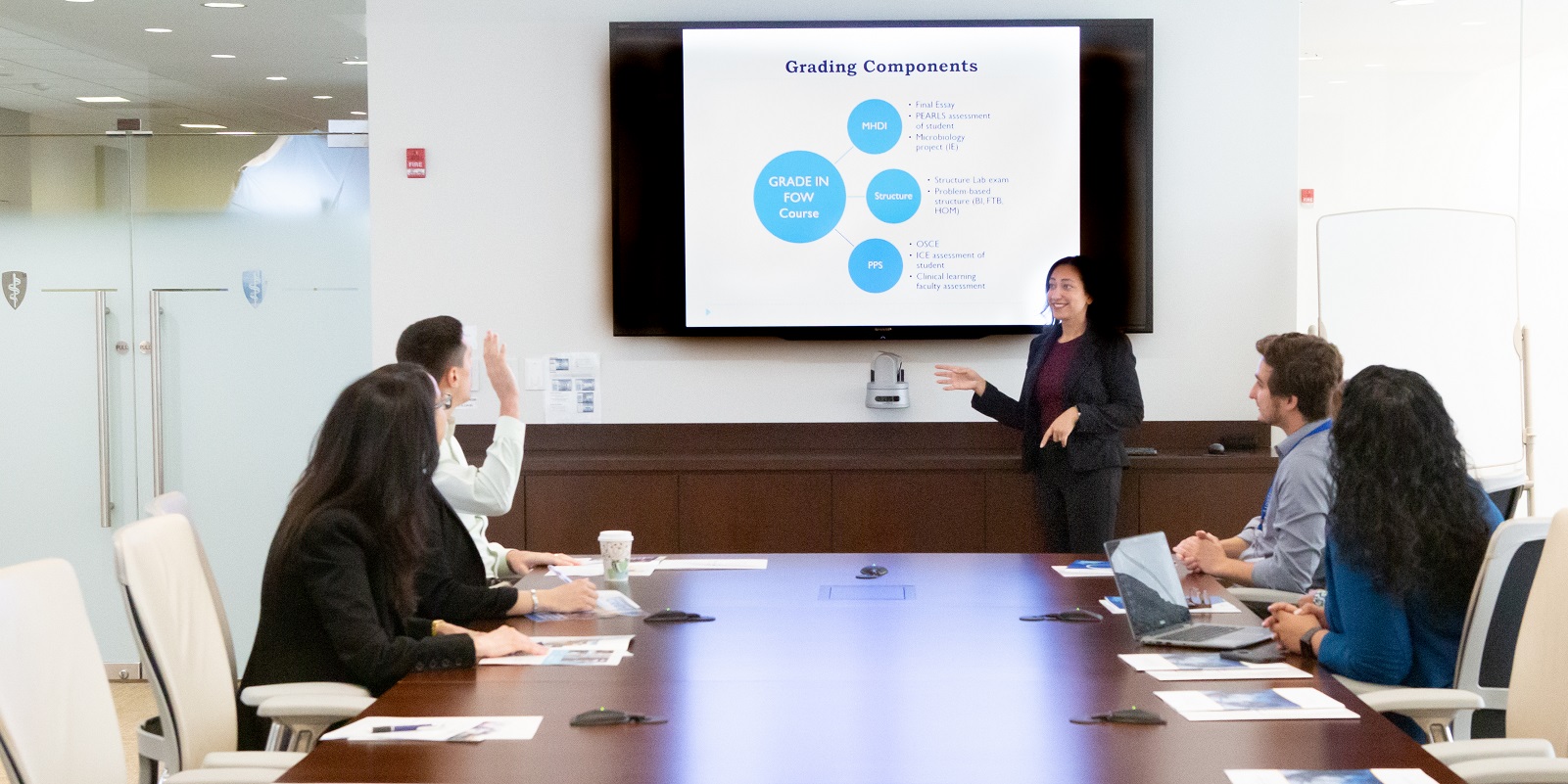First 100 Weeks (Years 1 & 2) Curriculum
The First 100 Weeks of our student-centered curriculum is comprised of seven integrated courses - CPR, BI, FTB, HOM, IE, HMI, HC.
The curriculum is organized around weekly themes anchored in our small group, problem/case-based learning program, PEARLS (Patient-Centered Explorations in Active Reasoning, Learning and Synthesis). PEARLS cases prompt students to develop biomedical, clinical, and social science objectives that are explored in small group discussions as well as in complementary sessions throughout the week, including large groups, labs, and multidisciplinary practice-based Initial Clinical Experiences (ICE). Contact hours are limited each week to allow for ample self-directed learning time and opportunities for review and reinforcement.
Each course is comprised of three curricular components: Mechanisms of Health, Disease, and Intervention; Structure; Patient, Physician and Society.
Mechanisms of Health, Disease, and Intervention
Mechanisms of Health, Disease, and Intervention component include normal and abnormal molecular, cellular, and organ physiology, as well as pharmacology and therapeutics. Students explore these topics in PEARLS as well as in other interactive large and small group sessions
Structure
The Structure component of each course integrates normal and abnormal anatomy, embryology, histology, pathology, imaging, physical diagnosis and ultrasound. In stations that utilize gross anatomical and pathologic specimens, histologic preparations, medical imaging studies and physical diagnostic exercises, the students make observations and incorporate clinical data.
Patient, Physician and Society (PPS)
The PPS component of each course includes two components: (1) a longitudinal, community practice-based clinical experience, known as the Initial Clinical Experience (ICE); and (2) classroom sessions focusing on social sciences, core clinical skills, and curricular “drivers”




